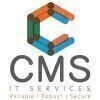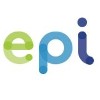


i
Filter interviews by
Precision Infomatic M Pvt Ltd Interview Questions and Answers
64 Interview questions
Memory ballooning is a memory reclamation technique used in virtualization to reclaim memory from virtual machines.
Memory ballooning is a technique used by hypervisors to reclaim memory from virtual machines by inflating or 'ballooning' a balloon driver inside the guest OS.
The hypervisor can then allocate this reclaimed memory to other virtual machines that need it more.
Memory ballooning is typically used when the...
Protocols used for Storage include iSCSI, Fibre Channel, NFS, and SMB.
iSCSI (Internet Small Computer System Interface)
Fibre Channel
NFS (Network File System)
SMB (Server Message Block)
Virtual machine may be inaccessible due to various reasons such as network issues, configuration errors, or resource constraints.
Check network connectivity to the virtual machine
Verify that the virtual machine is powered on
Ensure that the virtual machine's configuration is correct
Check for resource constraints such as CPU or memory usage
Review logs for any error messages or warnings
Orphaned status means the virtual machine is no longer associated with its parent resource pool or host.
Orphaned virtual machines can occur when a host fails or when a VM is manually removed from a resource pool.
Orphaned VMs can still consume resources and may need to be manually removed from the inventory.
To resolve orphaned status, the VM can be re-registered with a host or resource pool.
VSS is a virtual switch that operates at the host level, while Distributed Switch is a single switch that spans multiple hosts.
VSS is specific to each host, while Distributed Switch is shared across multiple hosts.
VSS is managed at the host level, while Distributed Switch is managed centrally.
Distributed Switch allows for centralized network configuration and monitoring.
VSS is limited to the host's physical NICs, ...
The Vm kernel is a Unix-like operating system that runs on the physical hardware and manages the virtual machines on a VMware host.
It is a thin layer of software that runs directly on the host hardware to enable multiple operating systems to run on a single physical server.
It is responsible for managing the physical resources of the host machine and providing a platform for virtual machines to run.
The Vm kernel is...
Admission control is a feature in Vmware that ensures resources are available for virtual machines during failover or migration.
Admission control prevents virtual machines from being powered on if it would violate resource constraints
It helps maintain high availability by ensuring that there are enough resources available for failover
Admission control policies include slot policy, dedicated failover hosts, and res...
Thin provisioning allocates storage space on demand, while thick provisioning allocates all space upfront.
Thin provisioning only uses space as data is written, maximizing storage efficiency.
Thick provisioning allocates all space upfront, ensuring immediate availability but potentially wasting space.
Thin provisioning is more flexible and allows for overcommitting storage resources.
Thick provisioning is more suitabl...
TPM stands for Trusted Platform Module, a hardware-based security feature that stores cryptographic keys and provides secure boot capabilities.
TPM is a microchip that is typically installed on the motherboard of a computer or server.
It provides hardware-based security functions such as secure boot, key storage, and encryption.
TPM helps ensure the integrity of the system by verifying that it has not been tampered w...
Template is a master copy used to create multiple identical VMs, while Clone is a copy of an existing VM.
Template is a blueprint for creating VMs, while Clone is a duplicate of an existing VM.
Templates are used for deploying multiple VMs with the same configuration, while Clones are used for creating copies of specific VMs.
Templates are typically read-only, while Clones can be modified independently.
Clones retain ...
Precision Infomatic M Pvt Ltd Interview Experiences
51 interviews found
I appeared for an interview in Jan 2025.
(1 Question)
- Q1. Basic knowledge about your domain
It's a scenario based task
(1 Question)
- Q1. Face to face interview with the senior technical manager.
(1 Question)
- Q1. Explanation of your roles and responsibilities, salary discussion.
Interview Preparation Tips
(18 Questions)
- Q1. Vcenter Upgrade and Prerequisite
- Q2. Host upgrade and Prerequisite
- Q3. Vcenter Patches update and Rollback Process
- Ans.
The vCenter patch update and rollback process ensures system stability and security through careful management of updates.
Always back up the vCenter Server before applying patches.
Use the VMware Update Manager (VUM) for automated patch management.
Review the release notes for compatibility and known issues before patching.
Test patches in a staging environment before applying them to production.
To rollback, use the backu...
- Q4. Host patches update and Rollback Process
- Ans.
The host patch update and rollback process ensures system stability and security in VMware environments.
1. Check for available patches using VMware Update Manager (VUM).
2. Schedule maintenance windows to apply patches to minimize downtime.
3. Create a snapshot of the host before applying patches for easy rollback.
4. Apply patches and monitor the process for any errors.
5. If issues arise, use the snapshot to revert to th...
- Q5. Vmotion Backend Process
- Q6. What is Memory ballooning?
- Ans.
Memory ballooning is a memory reclamation technique used in virtualization to reclaim memory from virtual machines.
Memory ballooning is a technique used by hypervisors to reclaim memory from virtual machines by inflating or 'ballooning' a balloon driver inside the guest OS.
The hypervisor can then allocate this reclaimed memory to other virtual machines that need it more.
Memory ballooning is typically used when the host...
- Q7. Cluster is Down ? How to fix
- Ans.
Check for underlying issues, restart services, verify network connectivity, review logs, escalate if necessary.
Check for any underlying issues that may have caused the cluster to go down
Restart the necessary services related to the cluster
Verify network connectivity between the cluster nodes
Review logs for any error messages or warnings
Escalate the issue to higher level support if necessary
- Q8. Vm Migration issue?
- Ans.
Vm migration issue can occur due to compatibility issues, network problems, or insufficient resources.
Check for compatibility issues between source and target environments
Ensure network connectivity and bandwidth are sufficient for migration
Verify that there are enough resources (CPU, memory, storage) available for the migration
Consider using migration tools like VMware vMotion or Storage vMotion
Troubleshoot any errors...
- Q9. PSOD Issues ? How to fix?
- Ans.
PSOD stands for Purple Screen of Death. It is a critical error in VMware that requires troubleshooting to fix.
Check for hardware issues such as faulty memory or CPU
Review system logs for any error messages leading up to the PSOD
Update VMware ESXi to the latest version
Check for compatibility issues with hardware or software
Contact VMware support for further assistance
- Q10. What is Vm kernel?
- Ans.
The Vm kernel is a Unix-like operating system that runs on the physical hardware and manages the virtual machines on a VMware host.
It is a thin layer of software that runs directly on the host hardware to enable multiple operating systems to run on a single physical server.
It is responsible for managing the physical resources of the host machine and providing a platform for virtual machines to run.
The Vm kernel is high...
- Q11. Different between VSS and Distributed Switch?
- Ans.
VSS is a virtual switch that operates at the host level, while Distributed Switch is a single switch that spans multiple hosts.
VSS is specific to each host, while Distributed Switch is shared across multiple hosts.
VSS is managed at the host level, while Distributed Switch is managed centrally.
Distributed Switch allows for centralized network configuration and monitoring.
VSS is limited to the host's physical NICs, while...
- Q12. Explain Thin and Thick provisioning?
- Ans.
Thin provisioning allocates storage space on demand, while thick provisioning allocates all space upfront.
Thin provisioning only uses space as data is written, maximizing storage efficiency.
Thick provisioning allocates all space upfront, ensuring immediate availability but potentially wasting space.
Thin provisioning is more flexible and allows for overcommitting storage resources.
Thick provisioning is more suitable for...
- Q13. Different between Template and Clone?
- Ans.
Template is a master copy used to create multiple identical VMs, while Clone is a copy of an existing VM.
Template is a blueprint for creating VMs, while Clone is a duplicate of an existing VM.
Templates are used for deploying multiple VMs with the same configuration, while Clones are used for creating copies of specific VMs.
Templates are typically read-only, while Clones can be modified independently.
Clones retain the s...
- Q14. Virtual machine is orphaned Status?
- Ans.
Orphaned status means the virtual machine is no longer associated with its parent resource pool or host.
Orphaned virtual machines can occur when a host fails or when a VM is manually removed from a resource pool.
Orphaned VMs can still consume resources and may need to be manually removed from the inventory.
To resolve orphaned status, the VM can be re-registered with a host or resource pool.
- Q15. Virtual machine inaccessible?
- Ans.
Virtual machine may be inaccessible due to various reasons such as network issues, configuration errors, or resource constraints.
Check network connectivity to the virtual machine
Verify that the virtual machine is powered on
Ensure that the virtual machine's configuration is correct
Check for resource constraints such as CPU or memory usage
Review logs for any error messages or warnings
- Q16. What is TPM and explain?
- Ans.
TPM stands for Trusted Platform Module, a hardware-based security feature that stores cryptographic keys and provides secure boot capabilities.
TPM is a microchip that is typically installed on the motherboard of a computer or server.
It provides hardware-based security functions such as secure boot, key storage, and encryption.
TPM helps ensure the integrity of the system by verifying that it has not been tampered with.
I...
- Q17. What is admission control ?
- Ans.
Admission control is a feature in Vmware that ensures resources are available for virtual machines during failover or migration.
Admission control prevents virtual machines from being powered on if it would violate resource constraints
It helps maintain high availability by ensuring that there are enough resources available for failover
Admission control policies include slot policy, dedicated failover hosts, and resource...
- Q18. What are protocol used for Storage?
- Ans.
Protocols used for Storage include iSCSI, Fibre Channel, NFS, and SMB.
iSCSI (Internet Small Computer System Interface)
Fibre Channel
NFS (Network File System)
SMB (Server Message Block)
Skills evaluated in this interview
I appeared for an interview in May 2025, where I was asked the following questions.
- Q1. What do you believe is the role of Human Resources (HR)?
- Ans.
HR plays a crucial role in managing talent, fostering workplace culture, and ensuring compliance within an organization.
Talent Acquisition: HR is responsible for recruiting and selecting the right candidates, ensuring a good fit for the company culture.
Employee Development: HR facilitates training programs to enhance employee skills and career growth, such as leadership workshops.
Performance Management: HR implements p...
- Q2. How is the job placement opportunities in your college
- Ans.
Our college has a robust placement cell that connects students with top companies, ensuring high job placement rates.
The placement cell organizes job fairs and recruitment drives, attracting companies from various sectors.
On average, over 80% of students secure jobs within six months of graduation.
Alumni network plays a crucial role in job placements, providing mentorship and referrals.
Internships are offered through t...
- Q3. Oppurtunities as HR
- Ans.
HR offers diverse opportunities in talent management, employee engagement, and organizational development.
Talent Acquisition: Identifying and recruiting top talent, e.g., using social media platforms for outreach.
Employee Development: Implementing training programs to enhance skills, like leadership workshops.
Diversity and Inclusion: Creating initiatives to promote a diverse workplace, such as mentorship programs.
Perfo...
- Q4. Will you learn new technologies for the role
- Ans.
Absolutely! I am eager to learn new technologies to enhance my skills and contribute effectively to the role.
I regularly take online courses on platforms like Coursera and Udemy to stay updated with the latest HR technologies.
For example, I recently completed a course on HR analytics tools, which helped me understand data-driven decision-making.
I am also familiar with various HR software like Workday and BambooHR, and ...
- Q5. How is your college experience
- Ans.
My college experience has been transformative, filled with academic growth, extracurricular involvement, and valuable networking opportunities.
Engaged in various student organizations, such as the HR club, where I developed leadership skills by organizing workshops.
Completed internships that provided hands-on experience in HR processes, enhancing my understanding of recruitment and employee relations.
Participated in gr...
I appeared for an interview before Oct 2020, where I was asked the following questions.
- Q1. Sccm,DLP, domain , dp server
- Q2. Windows , active directory
I appeared for an interview in May 2025, where I was asked the following questions.
- Q1. What is hypervoiser
- Ans.
A hypervisor is software that creates and manages virtual machines on a host system, enabling multiple OS to run concurrently.
Types of hypervisors: Type 1 (bare-metal) runs directly on hardware, e.g., VMware ESXi.
Type 2 (hosted) runs on an existing OS, e.g., VMware Workstation.
Hypervisors allocate resources like CPU, memory, and storage to virtual machines.
They enable server consolidation, improving resource utilizatio...
- Q2. Hypervoiser is software which is used to create multiple virtual machines using single hardware
I appeared for an interview in May 2025, where I was asked the following questions.
- Q1. Your positives and negatives
- Ans.
I am detail-oriented and adaptable, but I can be overly critical of my work and sometimes struggle with time management.
Positives: I am detail-oriented, which helps me catch errors and improve quality. For example, in my last project, I identified and corrected several inconsistencies.
Positives: I adapt quickly to new environments and challenges. When I started my last internship, I learned new software within a week.
N...
- Q2. What's your work intrest
- Ans.
I am passionate about combining technology and creativity to solve real-world problems, particularly in software development and design.
I enjoy coding and have experience in languages like Python and JavaScript, which I used to build a personal project management app.
I am interested in user experience design, having created wireframes and prototypes for a mobile app during my coursework.
I love collaborating with teams,...
- Q3. Your Strong at
- Q4. Your College name
- Ans.
I am currently studying at XYZ University, known for its strong emphasis on research and innovation in various fields.
XYZ University was established in 1990 and has a diverse student body.
The campus features state-of-the-art facilities, including modern laboratories and libraries.
It offers a wide range of programs, from engineering to humanities, fostering interdisciplinary collaboration.
The university is recognized fo...
I appeared for an interview in May 2025, where I was asked the following questions.
- Q1. What is the College name?
- Ans.
I am currently studying at XYZ University, known for its strong emphasis on research and innovation in various fields.
XYZ University offers a diverse range of programs, including engineering, business, and the arts.
The campus is equipped with state-of-the-art facilities, including laboratories and libraries.
Students have access to numerous extracurricular activities, fostering a well-rounded education.
The university ha...
- Q2. Where are you from?
- Ans.
I'm from a vibrant city known for its rich history, diverse culture, and beautiful landscapes, which inspire my passion for learning.
I grew up in a city that celebrates various festivals, such as Diwali and Christmas, showcasing its cultural diversity.
The local cuisine is a blend of flavors, with popular dishes like biryani and street food like chaat that reflect the region's heritage.
Nature is close to my heart; I oft...
Interview Preparation Tips
(2 Questions)
- Q1. Intro about yourself
- Ans.
I am a highly experienced Senior Systems Engineer with a strong background in designing and implementing complex IT solutions.
Over 10 years of experience in system design and implementation
Expertise in virtualization technologies such as VMware and Hyper-V
Proficient in network infrastructure design and troubleshooting
Strong knowledge of cloud computing platforms like AWS and Azure
Certified in relevant technologies such...
- Q2. Prepare for communication
- Ans.
Effective communication is crucial for a Senior Systems Engineer to ensure clarity and collaboration across teams.
Understand your audience: Tailor your message based on whether you're speaking to technical staff or management.
Use clear and concise language: Avoid jargon when unnecessary; for example, explain complex systems in simple terms.
Utilize visual aids: Diagrams and flowcharts can help convey complex ideas more ...
(2 Questions)
- Q1. Basic of Computer hardware and network
- Q2. Troubleshooting
Interview Preparation Tips
I appeared for an interview in Apr 2025, where I was asked the following questions.
- Q1. Ask chemical and sop mentioned
- Q2. Ask grooming process and timings
(2 Questions)
- Q1. Like basic question asked differently could you hear me about yourself?
- Q2. Asked about technical servicedesk roles and responsibilities?
(1 Question)
- Q1. Desktop technical questions
Top trending discussions






Precision Infomatic M Pvt Ltd Interview FAQs
The duration of Precision Infomatic M Pvt Ltd interview process can vary, but typically it takes about less than 2 weeks to complete.
Tell us how to improve this page.
Precision Infomatic M Pvt Ltd Interviews By Designations
- Precision Infomatic M Pvt Ltd System Engineer Interview Questions
- Precision Infomatic M Pvt Ltd Senior Systems Engineer Interview Questions
- Precision Infomatic M Pvt Ltd Intern Interview Questions
- Precision Infomatic M Pvt Ltd Senior System Engineer 2 Interview Questions
- Precision Infomatic M Pvt Ltd Vmware Administrator Interview Questions
- Precision Infomatic M Pvt Ltd System Administrator Interview Questions
- Precision Infomatic M Pvt Ltd Associate Project Manager Interview Questions
- Precision Infomatic M Pvt Ltd HR Intern Interview Questions
- Show more
Interview Questions for Popular Designations
Overall Interview Experience Rating
based on 61 interview experiences
Difficulty level
Duration
Interview Questions from Similar Companies
Precision Infomatic M Pvt Ltd Reviews and Ratings
based on 806 reviews
Rating in categories
|
System Engineer
712
salaries
| ₹1.5 L/yr - ₹4.5 L/yr |
|
Senior Systems Engineer
194
salaries
| ₹1.9 L/yr - ₹5 L/yr |
|
Desktop Support Engineer
116
salaries
| ₹1.5 L/yr - ₹3.7 L/yr |
|
System Administrator
75
salaries
| ₹2 L/yr - ₹6 L/yr |
|
Network Engineer
56
salaries
| ₹1.8 L/yr - ₹6 L/yr |

ITC Infotech

CMS IT Services

KocharTech

Xoriant
- Home >
- Interviews >
- Precision Infomatic M Pvt Ltd Interview Questions














